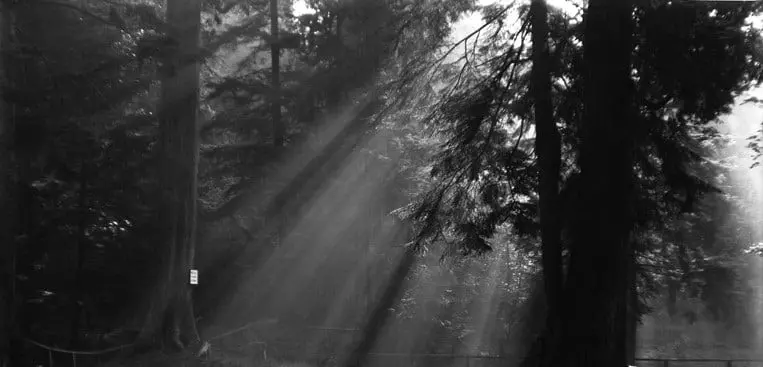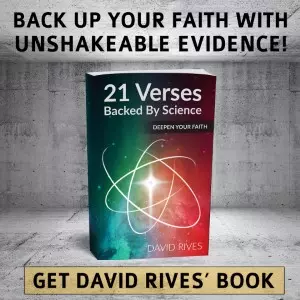[Originally published as the second part of TCQ Week 3: Science and the Supernatural]
Many seem to think there is a necessary contradiction between a biblical worldview and our ability to do science. Critics often mock the Bible because it seems the Bible is set in a world where science is hardly a consideration, let alone possible. They deny the possibility of miracles and assume the Bible cannot have anything to say about the natural world.
But are they right on either account?
First, there is evidence for the miraculous! The evidence for miracles, given the abundance of human testimony, is simply overwhelming.
In his book, The Case for Miracles, Strobel writes:
I wanted to know how many people have had an experience that they can only explain as being a miracle of God. As it turns out, nearly two out of five US adults (38 percent) said they have had such an experience — which means that an eye-popping 94,792,000 Americans are convinced that God has performed at least one miracle for them personally. That is an astonishing number!
This is evidence that simply can’t be ignored. When you combine this with the fact that, contra Hume, miracles are not violations of the laws of nature, it seems virtually laughable to conclude that miracles can’t — even don’t — occur.
Craig Keener summarizes his massive, two-volume work, Miracles:
What the radical Enlightenment excluded as implausible based on the principle of analogy, much of today’s world can accept on the same principle of analogy. Hundreds of millions of people worldwide claim to have experienced or witnessed what they believe are miracles. Eyewitness claims to dramatic recoveries appear in a wide variety of cultures, among them Christians often successfully emulating models of healings found in the Gospels and Acts. Granted, such healings do not occur on every occasion and are fairly unpredictable in their occurrence; yet they seem to appear with special frequency in cultures and circles that welcome them.
So, no — miracles don’t contradict science. They both work and coexist just fine, as they always have from the beginning.
Can We “Detect” Creation Through Science?
Speaking of the “beginning,” our discussion to this point leads to another big question: Where does creation end and science begin? Can we have direct evidence of God’s creative work? Should we expect to be able to find physical evidence of God’s intervention, say, in something like Noah’s Flood? Can design be detected in nature?
We’ll answer these questions by diving into a few specific case studies from both science and the Bible. Before doing that, let’s take a brief sidebar about the kind of conclusion scientists and historians are allowed to draw.
Are Scientists and Historians Allowed to Draw Supernatural Conclusions?
I’m going to complain about something that may seem contradictory at face value, but I think will make sense once I explain.
In prior lessons, I’ve argued that scientists often overstep their bounds by drawing conclusions they are not qualified to. For example, Richard Dawkins claims that biology gives the appearance of design, but then rules out that possibility because of his commitment to naturalism.
But there’s a built-in implication in my complaint: If science is the study of the natural world, wouldn’t it be “overstepping bounds” to draw a supernatural conclusion? Wouldn’t that make Dawkins a philosopher, since he’d be veering out of the realm of science by definition?
There’s a subtle yet important distinction to make here. Philosophers and scientists ask different questions. That much we know. But what about when the right questions lead to the “wrong” answers?
Dawkins is a biologist. He knows what questions to ask to come to conclusions within his field. These questions, at one point, apparently led him to conclude that biology gives the appearance of design. But there, his inquiry stopped.
Why did it stop? In other words, why not simply conclude: Design?
That’s because of the overwhelming assumption undergirding all of scientific work and study today, which would make most scientists of the past roll over in their graves:
Philosophical Naturalism (PN) and its cousin, Methodological Naturalism (MN).
PN is the view that scientists and historians can only, in principle, draw naturalistic conclusions from their work. Supernatural explanations are considered off-limits and invalid within this framework.
MN, on the other hand, is the view that scientists and historians should only draw naturalistic conclusions from their work. This approach maintains that while supernatural explanations may be true, they are not suitable for scientific inquiry and historical analysis due to the methods and principles guiding these disciplines.
So, which is it? Do I want Dawkins and his ilk to stay in their lane, or not?
What I want them to do, which does not require any additional training, is to simply draw the conclusion that is suggested by the evidence. Although science is the study of the natural world, if the natural world was created by a supernatural entity, how could we ever come to that conclusion without being allowed to draw it?!
And that’s precisely the problem with PN and MN.
Dr. Paul Nelson, a philosopher of science working with the Discovery Institute in California, writes:
In Darwin’s Doubt, Stephen Meyer argues that inferences to intelligent causation, while fully warranted by the evidence of the Cambrian explosion, run afoul of the dictum of methodological naturalism (MN)…
One cannot evaluate the evidence for or against any hypothesis that has been ruled out a priori. For this and other reasons, ID theorists regard MN as an obstacle to knowledge and hence a methodological rule that we would be better off without.
The phrase “an obstacle to knowledge” is vital. Science, after all, simply means knowledge. When we do science, we attempt to gain new knowledge. If that knowledge happens to be supernatural, so be it.
So, then, here’s the distinction: Yes, science is the study of the natural world. But sometimes the study of the natural world leads to supernatural conclusions. And if this possibility is ruled out before evaluating the evidence, it’s no wonder people use science as a weapon against God.
Another example comes from Professor Bart Ehrman. He’s a New Testament scholar and historian. He has evaluated the evidence for the resurrection and refuses to conclude that it actually happened, on the basis that it cannot in principle, be evaluated historically. (He’s made an attempt to discredit this claimed bias, but in so doing, doubled down on it.)
This is a cop-out. A Christian can follow where the evidence leads. If you assume naturalism when you do science, you restrict the evidence out of hand, which is simply bad science.
Ironically, then, when scientists try to be philosophers, they do so by limiting the conclusions they are allowed to draw. Assume naturalism from the outset, and get naturalism as your conclusion. It’s predetermined. A ruse disguised as a search for truth, all the while assuming the “truth” prior to investigation.
Let’s now look at some individual circumstances to talk about the line between natural study of the world and supernatural conclusions that can be drawn.
The Creation
I’ve always been intrigued by Genesis 1:11:
And God said, Let the earth bring forth grass, the herb yielding seed, and the fruit tree yielding fruit after his kind, whose seed is in itself, upon the earth: and it was so.
This takes place on the 3rd day of creation. Prior to the close of that day (v.13), God declared what he saw to be “good” (v.12), suggesting that whatever he set in motion was accomplished before the end of the day. New creative activity (related to the heavens) took place on Day 4.
This has startling implications: We know today it takes grass, trees, and fruit a long time to grow. But that wasn’t the case during the creation week.
The words “bring forth” translate the Hebrew word dasha, which means “to sprout” or “to cause to grow.” The picture is something like a time-lapse photo. Dr. Danny Faulkner, a creationist astronomer, has extended this thinking to the problem of distant starlight. He calls his solution, not surprisingly, The Dasha Theory.
Could we verify this time-lapse effect via science? That depends. It seems earth science will not grant this. There is simply no known mechanism that would allow us to detect whether the initial created flora resulted from a rapid growth process.
Dr. Faulkner is convinced of the same with respect to his astronomical theory as well. He writes:
General relativity is one of the best scientific theories we have. This is why solutions to the light travel time problem based upon general relativity are so attractive. But how much science as we now know it should we allow during the creation week? By its very nature, wasn’t the creation week miraculous? The creation of plants on day three hardly followed science as we know it. Ditto for the creation of swimming and flying things on day five and the creation of land animals and man on day six. The creation of light on day one seems to have not followed the pattern of how light is understood to work today. The creation of astronomical bodies on day four likely wasn’t accomplished by physical processes currently in operation.
As you might imagine, fellow creation scientists haven’t been thrilled with this proposal because it seemingly rules out, well, science!
Yet, one of my personal friends, Dr. Phil Dennis, is the leading creationist researcher on the subject of General Relativity. And he now believes his own starlight solution provides the scientific backdrop for the “unscientific” dasha theory.
We can also detect creation in the rock record. In a moment, we’ll talk more about the flood. We can detect rocks and fossils from the flood, which allows us to detect rocks from before the flood. Those rocks would seem to be part of the initial creation. How cool!
Using something called baraminology (the study of the created kinds), we can use science to become reasonably clear about what the initial created organisms were that speciated and developed into the ones we know today.
So yes, even though creation was a supernatural event, we can detect certain aspects of it through science!







